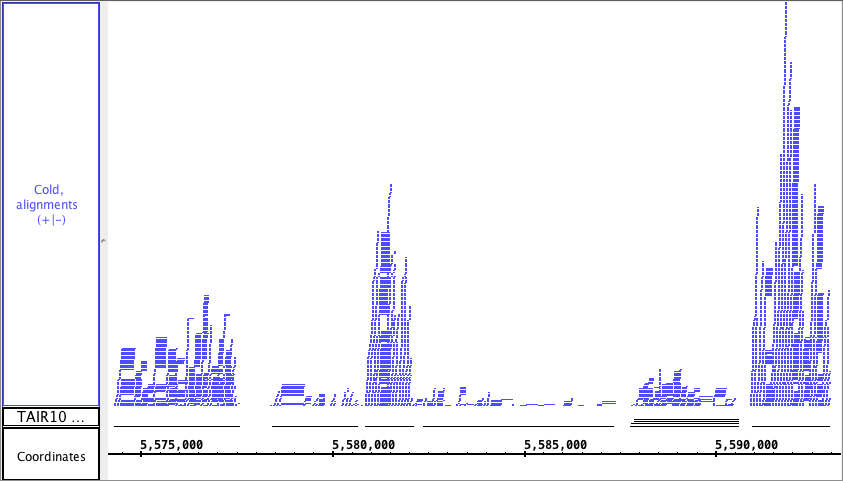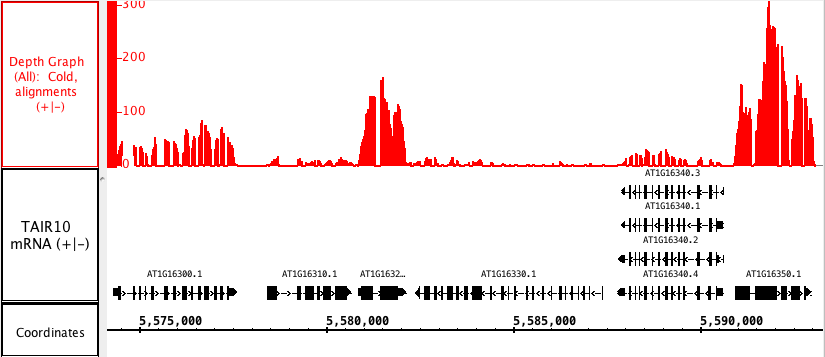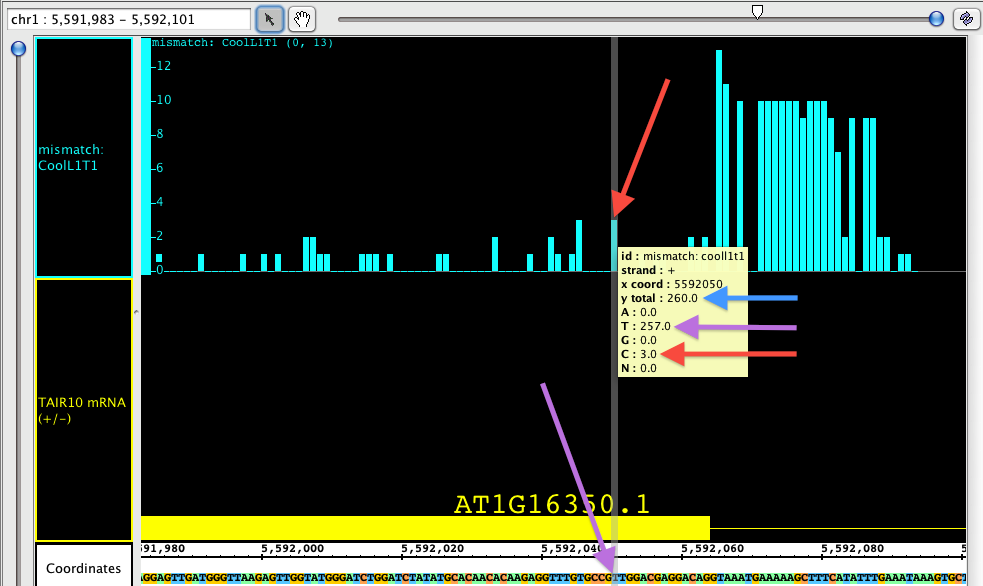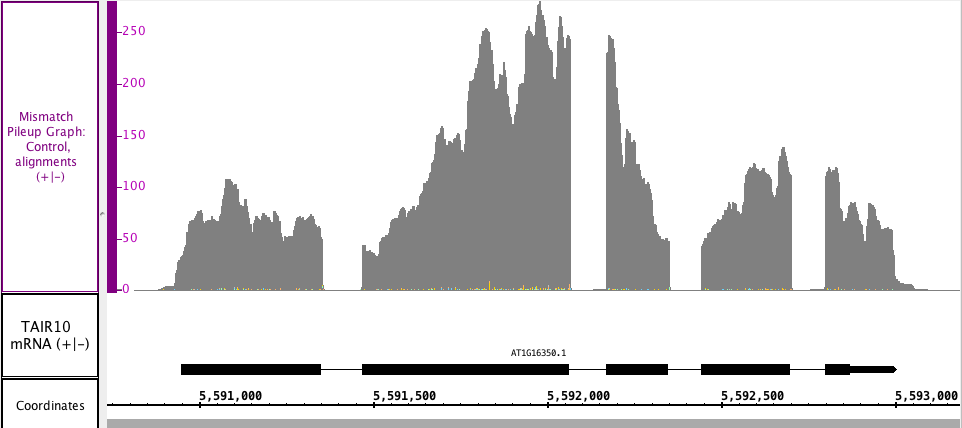...
The picture below shows a fully expanded .bam file, showing the difficulty of seeing any details. The second picture shows just the depth graph (.bam track is 'hidden') with the tool tip showing the number of reads aligned onto that specific genomic location.
Mismatch Graph
The mismatch Mismatch graph is specific to short read alignment files, such as BAM.bam. The graph shows only the number of mismatched nucleotides across all reads at a specific genomic location, which can be very helpful in the detection of allelic variation, SNP identification and also error checking. Right click in the label to access the menu; choose Make Mismatch Graph. This function requires that the genomic sequence be loaded; if it is not loaded at the time you request the graph, IGB will produce a warning with the option to load the sequence for you.
If you hover the Select tool (arrow cursor) over an individual bar of the graph, you will get a tool tip showing the total number of reads, and then the number of reads broken down by nucleotide. In the picture below, you can see that the total number of reads at the specified position is 260 (blue arrow). Of those reads, 257 at at 'T', which you can see is the matching nucleotide (purple arrows). 3 of those reads contain a 'G' instead; since G is a MISmatch, the graph shows a bar with height of 3 (red arrows).
Prototype - Mismatch Pileup Graph
In IGB 6.6, we have also introduced a new graph style which is the best of both worlds, the Mismatch Pileup. In this view, you have the Depth portion represented as a dark gray graph, with the Mismatch overlayed. Further, the mismatches are color coded to show which and how many of each nucleotide(s) are present at each mismatch position. The Mismatch Pileup graph is also specific to short read alignment files, such as BAM. Right click in the label to access the menu; choose Make Mismatch Pileup Graph. This function requires that the genomic sequence be loaded; if it is not loaded, IGB will load the sequence for you. Since the Mismatch Pileup is in the prototype stage, you may notice some 'quirky behavior' but you will quickly enjoy the usefulness of this graph option.
In the image below, you can see the gray depth portion matches the Depth graph from above, but you can also see the mismatched nucleotides (very small numbers in this section), which are color coded by G, A, T and C.



